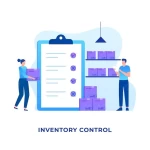- Table of Contents
- Introduction
- 1. Conduct Comprehensive Market Research
- 3. Establish Strong Supplier Relationships
- 4. Optimize Order Quantity
- 5. Take Advantage of Discounts and Promotions
- 6. Implement Efficient Inventory Management
- 7. Consider the Total Cost of Ownership
- 8. Diversify Your Supplier Base
- 9. Monitor Market Fluctuations
- 10. Focus on Quality, Not Just Quantity
- 11. Analyze and Review Past Purchases
Introduction
Bulk purchasing involves acquiring large quantities of goods at once, often to take advantage of cost savings and streamline procurement processes. However, to maximize the benefits and avoid potential pitfalls, it is crucial to approach bulk purchasing with a strategic mindset. Strategic planning in bulk purchasing ensures that decisions are informed by comprehensive market research, effective inventory management, and careful supplier selection. By understanding the complexities and leveraging strategic planning, businesses can optimize their bulk purchasing efforts to achieve cost efficiencies, enhance supply chain reliability, and support overall operational goals.
1. Conduct Comprehensive Market Research
Conducting comprehensive market research is the cornerstone of successful bulk purchasing, as it equips businesses with the knowledge and insights necessary to make informed decisions. The process begins with analyzing market trends, which involves understanding the current state of the market, identifying demand patterns, and predicting future shifts that could impact purchasing decisions. By keeping a close eye on market dynamics, businesses can anticipate price fluctuations, seasonal variations, and emerging product trends, allowing them to time their purchases for maximum cost efficiency. Additionally, staying informed about market trends helps in identifying potential opportunities for bulk purchasing that align with the business's long-term goals.
Identifying reliable suppliers is another critical component of comprehensive market research. The quality of suppliers directly influences the success of bulk purchasing, as it affects the consistency of product quality, delivery timelines, and overall cost-effectiveness. To ensure that the selected suppliers meet the required standards, businesses should:
- Evaluate Supplier Reputation: Research the supplier's history, customer reviews, and industry reputation to gauge reliability and trustworthiness.
- Assess Supplier Capabilities: Ensure the supplier has the capacity to fulfill large orders consistently and can accommodate any specific requirements.
- Compare Pricing Structures: Analyze pricing across multiple suppliers to identify those offering competitive rates without compromising on quality.
- Check for Certifications and Compliance: Verify that the supplier adheres to industry standards and has the necessary certifications, ensuring products meet safety and regulatory requirements.
By conducting thorough market research, businesses can make strategic bulk purchasing decisions that not only meet their immediate needs but also contribute to long-term success.
2. Assess Your Storage Capabilities
Assessing your storage capabilities is a crucial step in the bulk purchasing process, as it directly impacts the ability to manage large quantities of inventory efficiently. Adequate storage is essential to maintain the quality of goods, prevent damage, and ensure easy access when needed. Without sufficient storage, businesses risk overstocking, which can lead to wastage, spoilage, and unnecessary costs. Proper storage planning involves evaluating current warehouse space, understanding the types of products being stored, and ensuring that the storage environment is suitable for those products, such as temperature control for perishable items or security for high-value goods.
For businesses with limited storage space, creative solutions are necessary to maximize efficiency and avoid potential pitfalls. Some effective strategies include:
- Optimize Existing Space: Utilize vertical storage options, such as shelving or racking systems, to make the most of the available space. This can help increase storage capacity without requiring additional floor space.
- ImplementInventory Management Systems: Use software tools to track inventory levels and organize stock in a way that minimizes the space needed for storage. This includes employingjust-in-time inventory practices to reduce the amount of on-hand stock.
- Consider Off-Site Storage: For businesses with significant space constraints, renting off-site storage facilities can be a viable option. This allows for the storage of non-essential or surplus inventory, freeing up on-site space for more critical items.
- Leverage Shared Warehousing: Partner with other businesses to share storage facilities, which can help reduce costs and provide access to larger, more sophisticated storage solutions.
By carefully assessing and optimizing storage capabilities, businesses can ensure that their bulk purchasing efforts are both cost-effective and sustainable, avoiding the risks associated with inadequate storage.
3. Establish Strong Supplier Relationships
Establishing strong supplier relationships is a vital strategy for ensuring long-term success in bulk purchasing. Building long-term partnerships with suppliers fosters a sense of mutual trust and reliability, which can lead to more consistent product quality, better service, and increased flexibility. Suppliers who value their relationship with your business are more likely to prioritize your orders, offer early access to new products, and collaborate on solving any issues that may arise. A strong partnership also encourages open communication, enabling both parties to share valuable insights, forecast demand more accurately, and plan for future growth together.
Negotiating favorable terms is an integral part of cultivating these relationships, as it helps secure the best possible deals while aligning with your business's financial goals.Effective negotiation goes beyond just obtaining lower prices; it involves a comprehensive approach to securing advantages that benefit both parties. To achieve this, consider the following strategies:
- Understand the Supplier's Business: Gain insight into the supplier's cost structure, production timelines, and challenges. This knowledge can help you negotiate terms that are mutually beneficial, such as flexible payment options or bulk discounts.
- Leverage Purchase Volume: Use the purchasing power of bulk orders to negotiate better pricing, favorable credit terms, or exclusive deals that smaller orders might not qualify for.
- Include Quality and Service Guarantees: Ensure that the contract includes provisions for maintaining product quality, on-time delivery, and responsive customer service. These guarantees protect your business from potential disruptions and ensure that the supplier remains committed to meeting your standards.
- Build in Flexibility: Negotiate terms that allow for adjustments in order quantities, delivery schedules, or pricing in response to changing market conditions or business needs.
By focusing on building strong, long-term relationships with suppliers and negotiating terms that benefit both parties, businesses can create a stable and reliable supply chain that supports their bulk purchasing strategy. This not only enhances operational efficiency but also contributes to sustained growth and competitiveness in the market.
4. Optimize Order Quantity
Optimizing order quantity is a critical aspect of bulk purchasing, as it directly affects both the financial efficiency and operational effectiveness of a business. Calculating the right order size involves a careful analysis of various factors, including current and projected demand, inventory holding costs, and supplier discounts. The goal is to strike a balance that maximizes cost savings without overburdening storage facilities or tying up too much capital in inventory. An accurate calculation ensures that the business can meet customer demand consistently while minimizing the risks associated with excess inventory, such as spoilage, obsolescence, or increased storage costs.
Balancing cost savings with demand is key to optimizing order quantity. Bulk purchases often come with significant discounts, making it tempting to order more than necessary to capitalize on lower prices. However, ordering too much can lead to inefficiencies and potential losses if the inventory is not used promptly. To find the right balance, consider the following approaches:
- Analyze Historical Sales Data: Review past sales patterns to forecast future demand accurately. This data-driven approach helps in ordering just the right amount to meet expected sales without overstocking.
- Consider Lead Times and Supplier Reliability: Factor in the time it takes for suppliers to deliver orders and their reliability. Longer lead times may require larger orders to avoid stockouts, while more reliable suppliers may allow for smaller, more frequent orders.
- Calculate Economic Order Quantity (EOQ): Use the EOQ formula to determine the optimal order size that minimizes total inventory costs, including ordering and holding costs. This helps in finding a balance between taking advantage of bulk discounts and avoiding excessive inventory.
- Adjust for Seasonal or Market Trends: If your business experiences seasonal demand fluctuations or is influenced by market trends, adjust order quantities accordingly. Larger orders might be justified during peak seasons, while smaller orders could be more appropriate during off-peak times.
Table: Strategies for Optimizing Order Quantity in Bulk Purchasing
Aspect | Details |
Importance | Optimizing order quantity impacts financial efficiency and operational effectiveness. |
Calculation Factors | Consider current/projected demand, inventory holding costs, and supplier discounts. |
Goal | Balance cost savings with avoiding overstocking or tying up capital. |
Risks of Excess Inventory | Spoilage, obsolescence, increased storage costs. |
Strategies to Optimize Order Quantity | -Analyze Historical Sales Data: Forecast demand using past sales patterns. -Consider Lead Times: Factor in supplier delivery times and reliability. -Calculate EOQ: Determine optimal order size to minimize total inventory costs. -Adjust for Trends: Adapt order sizes for seasonal/market fluctuations. |
Outcome | Maximizes cost efficiency, maintains supply chain agility, and meets customer needs. |
By carefully optimizing order quantity, businesses can ensure that they are maximizing the benefits of bulk purchasing while maintaining the flexibility to respond to changing market conditions and customer needs. This strategy not only improves cost efficiency but also supports a more agile and responsive supply chain.
5. Take Advantage of Discounts and Promotions
Taking advantage of discounts and promotions is a key strategy in maximizing the benefits of bulk purchasing, allowing businesses to significantly reduce costs and enhance profitability. Leveraging volume discounts is one of the most effective ways to capitalize on bulk buying. Suppliers often offer substantial price reductions for larger orders, making it financially advantageous to purchase in bulk rather than in smaller, more frequent quantities. By negotiating and securing volume discounts, businesses can lower their per-unit costs, which directly improves their profit margins. However, it’s crucial to ensure that the bulk quantities align with demand forecasts to avoid overstocking and the associated risks of excess inventory.
Timing your purchases with promotional offers is another crucial aspect of optimizing savings in bulk purchasing. Suppliers and manufacturers frequently run promotions, such as seasonal sales, clearance events, or limited-time offers, where products are sold at reduced prices. By planning purchases around these promotions, businesses can further enhance their cost savings. Some strategies to effectively time your purchases include:
- Monitor Supplier Sales Cycles: Keep track of when suppliers typically offer discounts or run promotions, such as during the end of the financial quarter or year, and plan your bulk purchases accordingly.
- Align Purchases with Market Trends: Stay informed about industry trends and market conditions that might lead to promotional offers, such as overproduction or excess inventory situations.
- Negotiate Custom Promotions: If you have a strong relationship with a supplier, consider negotiating exclusive promotions or discounts based on your purchasing history or commitment to future orders.
- Use Bulk Purchases to Meet Minimums for Additional Discounts: Sometimes, purchasing during promotions allows businesses to qualify for additional discounts, rebates, or free shipping, further reducing overall costs.
By strategically leveraging volume discounts and timing purchases with promotional offers, businesses can significantly reduce their procurement costs while ensuring they have the necessary inventory to meet demand. This approach not only enhances cost-efficiency but also strengthens the company’s competitive position in the market by allowing it to offer products at more competitive prices.
6. Implement Efficient Inventory Management
Implementing efficient inventory management is a crucial strategy for businesses engaged in bulk purchasing, as it ensures that inventory levels are optimized and that the benefits of buying in large quantities are fully realized. Efficient inventory management begins with accurately tracking inventory levels, which involves maintaining real-time visibility of stock on hand, incoming orders, and sales. This level of oversight helps businesses avoid the pitfalls of overstocking or understocking, both of which can lead to significant financial losses. With precise tracking systems in place, businesses can ensure that they have just the right amount of inventory to meet customer demand without tying up excessive capital in stock.
Reducing waste and spoilage is another essential component of efficient inventory management, particularly when dealing with perishable goods or items with a limited shelf life. Without proper management, bulk purchases can quickly turn into liabilities if products expire or deteriorate before they can be sold or used. To minimize waste and spoilage, consider implementing the following strategies:
- First-In, First-Out (FIFO) Method: Ensure that older stock is used or sold before newer inventory, which is particularly important for perishable goods. This helps reduce the chances of products reaching their expiration date while still in storage.
- Regular Inventory Audits: Conduct periodic audits to identify slow-moving or obsolete inventory, allowing you to take corrective actions such as discounting or repurposing these items before they become unsellable.
- Invest in Appropriate Storage Solutions: Use storage systems that maintain the optimal conditions for the products being stored, such as climate control for temperature-sensitive items, to extend their shelf life and reduce spoilage.
- Use Inventory Management Software: Implement advanced inventory management software that offers features like automated reordering, low-stock alerts, and demand forecasting. These tools help ensure that inventory levels are always aligned with actual demand, minimizing excess stock and waste.
By focusing on efficient inventory management, businesses can maximize the value of their bulk purchases while minimizing the risks associated with overstocking, waste, and spoilage. This approach not only protects the bottom line but also enhances the overall efficiency and sustainability of the supply chain, ensuring that the benefits of bulk purchasing are fully realized.
7. Consider the Total Cost of Ownership
Considering the Total Cost of Ownership (TCO) is a critical strategy in bulk purchasing that goes beyond merely looking at the upfront purchase price. Understanding TCO involves a comprehensive analysis of all the costs associated with acquiring, storing, using, and eventually disposing of the products. These costs include not only the initial purchase price but also factors such as transportation, storage, handling, maintenance, and even potential disposal fees. By evaluating TCO, businesses can make more informed purchasing decisions that reflect the true financial impact of their investments over time. This holistic approach helps avoid the pitfalls of focusing solely on immediate cost savings, which might lead to higher expenses in the long run.
Evaluating long-term costs and benefits is essential for accurately assessing the TCO. This involves looking at the entire lifecycle of the product and considering how it aligns with the business’s operational needs and financial goals. To effectively evaluate the TCO, businesses should:
- Analyze Maintenance and Operational Costs: Consider the costs associated with maintaining and operating the purchased goods. For example, equipment may require regular servicing, while consumable goods may incur costs related to their use and disposal.
- Factor in Storage and Handling Expenses: Include the costs of storing the products, especially if they require special conditions such as climate control or security. Additionally, consider the labor and equipment needed to handle and manage the inventory.
- Account for Depreciation and Obsolescence: Recognize that some products may lose value over time or become obsolete. Assessing the potential depreciation and planning for future upgrades or replacements can provide a clearer picture of the long-term costs.
- Evaluate Potential Revenue Impact: Consider how the product might impact revenue generation. For instance, higher-quality materials might have a higher upfront cost but could lead to better product performance, customer satisfaction, and ultimately, increased sales.
- Consider Environmental and Regulatory Costs: If applicable, factor in the costs of compliance with environmental regulations or the potential need for sustainable disposal methods, which can affect the overall TCO.
By thoroughly considering the Total Cost of Ownership, businesses can ensure that their bulk purchasing decisions are not only cost-effective in the short term but also sustainable and beneficial over the long term. This strategic approach to purchasing helps in optimizing resources, enhancing profitability, and avoiding unforeseen costs that could undermine the advantages of bulk buying.
8. Diversify Your Supplier Base
Diversifying your supplier base is a vital strategy in bulk purchasing that helps mitigate risks and ensures supply chain continuity. Relying on a single supplier can expose your business to various vulnerabilities, such as supply disruptions, price increases, or quality issues. By working with multiple suppliers, you spread these risks, making your supply chain more resilient. Diversification allows your business to compare and choose the best supplier for specific needs, whether it be price, quality, or delivery speed. It also enhances your negotiating power, as suppliers are more likely to offer competitive terms when they know they are not your sole source.
Mitigating risks with multiple suppliers involves careful selection and management of your supplier network. The key is to strike a balance between having enough suppliers to avoid dependency while maintaining strong relationships with each. Some strategies include:
- Segment Your Supply Needs: Identify the various components of your bulk purchasing needs and assign them to different suppliers based on their strengths and specialties. This reduces the impact of a disruption from any single supplier.
- Develop Contingency Plans: Ensure that you have backup suppliers in place for critical products or services. This way, if one supplier fails to deliver, you can quickly pivot to another without significant delays or losses.
- Monitor Supplier Performance: Regularly evaluate the performance of each supplier in terms of quality, delivery time, and cost-effectiveness. This ongoing assessment helps in maintaining a reliable and flexible supplier base.
Ensuring supply chain continuity is another significant benefit of supplier diversification. In today’s globalized market, disruptions can occur due to various factors, such as natural disasters, political instability, or economic shifts. A diversified supplier base helps protect your business from these unpredictable events. To ensure supply chain continuity, consider:
- Geographical Diversification: Source suppliers from different regions to reduce the risk of disruptions due to localized events like natural disasters or political instability.
- Build Strong Relationships Across the Board: Cultivate strong relationships with all your suppliers, not just the primary ones. This ensures that even secondary suppliers are willing and able to step up in times of need.
- Leverage Technology for Visibility: Use supply chain management software to gain real-time insights into your supplier network. This visibility helps in quickly identifying potential issues and responding proactively.
By diversifying your supplier base, you not only mitigate risks but also ensure that your supply chain remains robust, adaptable, and capable of withstanding unforeseen challenges. This strategy enhances the overall stability and efficiency of your bulk purchasing operations, positioning your business for long-term success.
9. Monitor Market Fluctuations
Monitoring market fluctuations is essential for optimizing bulk purchasing strategies and ensuring that your business remains competitive and cost-effective. Market conditions, including price changes and supply-demand dynamics, can significantly impact the cost and availability of goods. By staying informed about these fluctuations, businesses can make timely decisions that capitalize on favorable conditions and mitigate potential risks.
Staying informed on price changes involves regularly tracking market trends, commodity prices, and economic indicators that could affect the cost of the products you purchase. Key practices include:
- Utilize Market Reports and Analytics: Leverage industry reports, market analysis tools, and financial news to stay updated on price trends and economic conditions that impact your supply chain. These resources provide valuable insights into market shifts and potential price movements.
- Monitor Supplier Pricing: Regularly review pricing updates from your suppliers and compare them against market trends. This helps in identifying opportunities to negotiate better terms or adjust your purchasing strategy based on current pricing.
- Engage with Industry Experts: Build relationships with market analysts or industry experts who can provide forecasts and insights into future price movements and market conditions.
Adjusting purchase timing accordingly is a strategic approach to taking advantage of favorable market conditions and avoiding adverse effects from price increases or supply shortages. To effectively manage purchase timing, consider the following strategies:
- Plan Purchases Around Market Cycles: Align your bulk purchasing decisions with anticipatedmarket trends, such as buying ahead of expected price increases or stock shortages. This requires a good understanding of market cycles and seasonal fluctuations.
- Implement Flexible Ordering Policies: Develop policies that allow you to adjust order sizes and timing based on real-time market data. This flexibility helps you respond swiftly to changing conditions and optimize your purchasing strategy.
- Negotiate Price Protection Clauses: When possible, negotiate contracts with suppliers that include price protection clauses or fixed pricing agreements. This can shield your business from sudden price spikes and ensure more predictable costs.
By actively monitoring market fluctuations and adjusting your purchase timing, you can enhance the effectiveness of your bulk purchasing strategy. This proactive approach helps in maximizing cost savings, ensuring supply availability, and maintaining a competitive edge in a dynamic market environment.
10. Focus on Quality, Not Just Quantity
Focusing on quality, not just quantity, is a crucial strategy in bulk purchasing to ensure that your investments yield the best possible outcomes. While bulk purchasing often emphasizes acquiring larger quantities to achieve cost savings, maintaining high product quality is equally important for sustaining customer satisfaction and business reputation. Quality issues can lead to increased returns, customer complaints, and potential damage to your brand, making it essential to prioritize product quality even when buying in bulk.
Ensuring product quality in bulk purchases involves several key practices:
- Conduct Supplier Audits: Regularly assess the quality control processes of your suppliers. This includes evaluating their production standards, testing procedures, and certifications to ensure they meet your quality requirements.
- Request Product Samples: Before committing to large orders, obtain samples of the products to verify their quality. This allows you to assess factors such as durability, performance, and consistency.
- Implement Quality Checks: Establish quality inspection procedures for incoming bulk shipments. This can include random sampling and testing to ensure that the products meet your specified standards before they are added to inventory.
Balancing quality with cost is a critical aspect of making effective bulk purchasing decisions. While it may be tempting to prioritize cost savings, compromising on quality can have long-term negative effects on your business. To achieve this balance, consider the following strategies:
- Evaluate the Total Value: Assess the overall value of the products by considering both quality and cost. Sometimes, investing in higher-quality products can reduce returns and replacements, ultimately leading to greater cost efficiency over time.
- Negotiate Quality-Related Terms: Discuss quality expectations with your suppliers and negotiate terms that ensure the products will meet your standards. This can include quality guarantees, warranties, or return policies in case of defects.
- Consider Total Cost of Ownership (TCO): As part of your cost analysis, factor in the potential costs associated with poor-quality products, such as customer dissatisfaction, returns, and reputational damage. A slightly higher upfront cost for better quality can often be more economical in the long run.
By focusing on both quality and quantity, businesses can ensure that their bulk purchasing strategies not only achieve cost savings but also maintain high standards of product excellence. This balanced approach supports customer satisfaction, reduces the risk of quality-related issues, and contributes to the overall success and sustainability of the business.
11. Analyze and Review Past Purchases
Analyzing and reviewing past purchases is a critical step in refining and improving bulk purchasing strategies. By examining previous transactions, businesses can gain valuable insights into what worked well and identify areas for improvement. This reflective process helps in optimizing future bulk purchases, enhancing cost efficiency, and mitigating potential issues.
Learning from previous purchases involves a thorough evaluation of past data to understand purchasing patterns and outcomes. Key aspects to consider include:
- Evaluate Purchase Accuracy: Review whether previous bulk purchases met demand accurately. Analyze any discrepancies between ordered quantities and actual usage to identify patterns of overstocking or stockouts.
- Assess Cost Effectiveness: Compare the costs associated with past purchases, including the purchase price, shipping, and storage expenses. Determine if the bulk discounts received were offset by other costs or if better pricing opportunities could have been leveraged.
- Review Supplier Performance: Analyze the performance of suppliers from past transactions, focusing on factors such as product quality, delivery timeliness, and customer service. This assessment helps in identifying reliable suppliers and areas for improvement.
Adjusting strategies based on past performance involves using the insights gained from your analysis to make informed decisions for future bulk purchases. Effective strategies include:
- Refine Ordering Practices: Based on past purchase accuracy, adjust your ordering practices to better align with actual demand. Implement improved forecasting methods or inventory management practices to minimize discrepancies.
- Negotiate Better Terms: Use insights from cost evaluations to negotiate better terms with suppliers. This could involve seeking additional discounts, revising contract terms, or exploring alternative suppliers for more competitive pricing.
- Enhance Supplier Relationships: Address any issues identified with supplier performance and work on strengthening relationships. Provide feedback to suppliers on areas where they can improve, and use this information to foster more collaborative partnerships.
- Optimize Storage and Handling: Use information from past reviews to improve storage and handling practices. For instance, if past issues included spoilage or damage, consider investing in better storage solutions or refining handling procedures.
By systematically analyzing and reviewing past purchases, businesses can continuously improve their bulk purchasing strategies. This iterative approach ensures that lessons learned are applied to future transactions, leading to more effective purchasing decisions, reduced costs, and a more efficient supply chain.
Conclusion
In conclusion, successful bulk purchasing hinges on implementing a range of strategic practices. Key strategies include conducting comprehensive market research, assessing storage capabilities, establishing strong supplier relationships, and optimizing order quantities. Additionally, leveraging discounts, managing inventory efficiently, considering the total cost of ownership, diversifying the supplier base, and monitoring market fluctuations all contribute to a well-rounded approach. Balancing quality with cost and reviewing past purchases further refine these strategies, ensuring continual improvement. By integrating these tactics into their bulk purchasing strategy, businesses can achieve significant cost savings, maintain a resilient supply chain, and enhance operational efficiency, paving the way for sustained success in their procurement efforts.

























